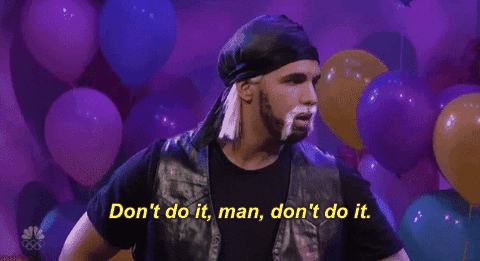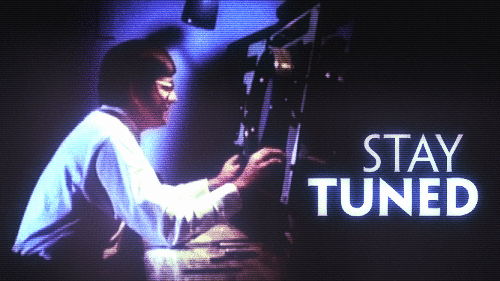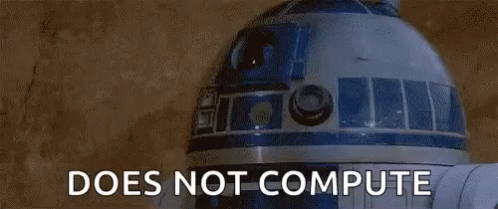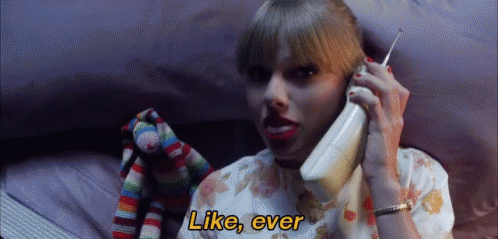Micro Dispatch: Offers
Pulled from '8 Things Learned in 2020'
Welcome to the second micro-dispatch!
Today I'm breaking down larger points made in the monthly newsletter that dropped on 1/5 this month. If you haven't read that, check it out here.
The three that I'm pulling from are Avatars, Offers, and Journeys.
Today, we'll be looking at Offers.
And I should preface: if you have a strong understanding of data, primarily LTV:CAC ratios, this entire setup/mindset for scaling with offers becomes much easier to digest.
I’ll explain more later but the more you understand the ideal CAC for your brand, the easier it is to build offers like the one we’ll discuss today (spoiler: it’s bundles).
Now, some more housekeeping with this dispatch…
The growth playbook on acquisition for paid channels is ever-evolving.
As it should be.
Offers at scale are no different. Especially bundling.
So, it’s important to understand that the thoughts shared here today are from MY ever-evolving learnings with brands that are growing organic communities ALONGSIDE aggressive acquisition strategies.
We’re not solely relying on paid.
But I’ve learned that there are a few things that allow brands to tap into this further. We touched on Avatars in the last micro-dispatch, and now we bring in the offers. More specifically, the bundles.
If you want bundling to work, and to work consistently, you need a deeply thoughtful approach. In my opinion.
Now, I might be taking a completely different pathway to explain this than you’re used to, and I believe that’s okay…
Heck, that could be the entire reason you’re here. 😉
Does that mean this is the only way?
Of course not. If you remember our running theme this year,
“We don’t speak in absolute truths.”
So, when we think about the offer (or the bundle) as they relate to revenue growth, my team and I break it down into a ‘funnel’ where our primary goals are:
To increase AOV
To Increase Revenue
AND to get an audience off a rented property, into an owned channel
I never see people talk about #3. Increasing AOV is great, and we’re all about revenue growth, but the real win is getting them off rented land.
And, while we’re here… at any given time, a bundle can be swapped out for cross-sells and add-ons. But this is a micro-dispatch, so we’re not going there.
Right. So we’ve already dialed in TOF (top of the funnel), we’ve built mass awareness, we’re hitting our Avatars, and the relationship is evolving.
We’ve got a budget to work/scale this bundle because we understand ideal CAC based off LTV, etc., etc.
Now how do we stretch that budget?
Lay Out the Basics
Reduce Friction & Cognitive Load
Build a Deeper, More Intimate Relationship
Number 3 might be where I lose you but allow me to explain when we get there.
Let’s break these down.
1. Lay Out the Basics
When you run a bundle offer in the MOF (middle of funnel), at scale for a growing brand, it’s less about that instant conversion and more about moving the intent needle + increasing AOV.
Therefore, I can present this in a much more polished fashion.
We quickly realized, that at scale, a bundle is pretty much unstoppable when it comes to hooking that rented audience & moving them down the funnel.
Remember, that’s the entire 3 level macro goal of this setup, alongside revenue growth.
How the hell are you growing revenue with a bundle?
Bundles, done right, are what allow you to increase AOV, and then when that consumer is now a customer (on an owned channel), we can decrease CAC with owned efforts and start increasing LTV.
How do I get a Bundle right? Take the time to research the pain points you’re going to address with a Bundle. Not just the price. Let that research guide you to the core items bundled together.
We’ll get into why price shouldn’t be the main focus in the next section.
Now, let’s throw it back for a second.
Back to the 1960’s. Where a one, Ed Mayer came up with the 40-40-20 rule. It breaks down the factors that contribute to a marketing effort’s success.
40% Audience, 40% Offer, 20% Creative.
I think about this often. Why? It’s a testament to what I love. Which is the marketing and psychology fundamentals behind advertising.
The Basics.
The little things, that will never change, as playbooks evolve.
I’m going to break this down further in an upcoming dispatch about the importance of Landing Pages (LP) within the acquisition bundling stage.
Little things we’ve learned, like having one bundle on an LP. Stay tuned for that.
The final thing here with the basics is that when you have 5-20 products, you have to market each of those products. If you do the research, you can build bundles that allow you to just market 1 or 2. Which can scale much easier.
2. Reduce Friction & Cognitive Load
If you’re evaluating what offer can reduce the most friction, it’s bundling.
No questions asked for me. I’ll always point to bundling.
More importantly, bundling with a guarantee attached to it.
This is the number 1 offer that reduces friction.
Not percents off, or discounting tiers, or layering a higher priced item with something cheaper (more on that later). Which is the key reason it’s the only focus today. That, and… this is a micro-dispatch.
What are our primary goals outside of our macro goals?
With offers, the goal isn’t to simply discount something and see if that scales. Or drive down CAC. Or increase MER. Or JUST increase AOV.
Our macro goal is to introduce risk reduction into the prospect’s journey. In turn, reducing friction and cognitive load.
We’re leaning on a guarantee now, we’re pushing testimonials on the LP that supports the offer, and we’re answering the objections the consumer experienced on their first touch-point (TOF) thus reducing friction.
When you’ve identified your prospects, and they are neatly packaged into an avatar, and you want the maximum conversion velocity on that audience, you have to reduce friction.
Now, bear with me… Because I’m a psychology nut at heart and there’s some cool research here…
You see, people tend to categorize along one dimension at a time. Especially when it comes to advertising and online shopping. The moment you break that pattern, you introduce more cognitive load for a consumer.
Meaning, at any given time, a consumer really only focuses on one key thing when it comes to a bundle.
And if that’s price… woah nelly… you’re in trouble.
So if you get people to focus on nonprice attributes with your bundle, the price effect will go away, thus decreasing cognitive load and in turn, you wipe out categorizing altogether.
Jake, why do I care about cognitive load?
EMPHASIS BACK ONTO THE CUSTOMER.
Okay… but wtf is the price effect?
This is where the perceived value of your bundle can actually become less when you pair an expensive item with something cheaper. The consumer sees that, and says “does not compute.”
They would rather separate the two, thus devaluing your entire bundle. And that bundle is now dead in the water.
So your goal is to think through the bundle in terms of value props rather than price. Focus on a certain attribute of this bundle that speaks to the consumer.
After all, you already took the time to research why these two items should be paired together in the first place. The Basics.
Ie. “We’ve bundled our top-selling Dog Collar and Leash, because thousands of dog lovers, just like you have found them to be more effective when paired together. Finally, dog walking made easy!”
It’s about a focus on benefits. It doesn’t need to be about value.
Pretty cool, right?
As I said, it’s not all about just slapping two items together and saying here’s a discount, let’s increase our AOV, and let’s go scale this damn thing.
You have to think through every little detail. And, if you’re just getting into bundling, these are the areas where I typically see the most pushback.
Because everyone hears bundling and immediately they think about a price drop.
Well, let me pop in a small flex… After you’ve spent $100M, and used this to grow revenues, you realize there’s a lot more to it.
Which I hope you’ll take the time to look into outside of this newsletter.
Now, let’s get back to another way that bundling reduces friction.
You’re essentially pulling off an old-school marketing technique when you get that perfect bundle(s) together.
Which is recommendation-drive, neatly packaged into an offer.
Ever fell victim to a recommendation on Amazon?
There’s a psychological reason for that bar that says ‘Frequently Bought Together’. It reduces your cognitive load. It feels more like a choice YOU can make rather than a sale the brand is shoving in your face.
Therefore, the consumer is once again back at the center of attention and, you guessed it… we’re reducing risk and cognitive load.
Catching onto a theme here?
3. Build a Deeper, More Intimate Relationship
The beauty of a bundle offer is that on the surface and even at its core, it’s not about the brand, it’s about the consumer.
This is why this playbook works. It makes this part of the journey all about the consumer. You’ve already shown on TOF the value props, the Us vs. Them creative, the key reasons why someone should care about you.
Now you’re bringing them content that says, “it’s all about YOU today.”
Which is incredibly powerful on a second touch-point.
Especially when you understand the value of that bundle, as it relates to the main goals and intent… Remember… increase AOV, revenue growth AND getting that consumer off the rented channel 👍
How can you build a deeper relationship while doing this?
It’s all about giving them more when they enter that door for the second time.
Take it back to brick and mortar for a second…
This entire scenario would play out as such:
The welcome bell rings when the customer walks in… and you’re greeting them by name, “Hey, welcome back Lisa!” You’re offering Lisa some water, and allowing Lisa to experience more of your brand WITHOUT a discount coupon in hand (that she clipped from the Sunday paper (TOF)).
You have the consumer expectations. You’ve addressed the basics. You’ve done your research and know what consumers are frequently purchasing together. And now you’re building that into a bundle to your advantage. To show Lisa that you care. To show Lisa that you’ve thought about the next step with her.
But the core, core reason bundles build a deeper relationship, is that they reduce the pain of buying for a consumer. Yes, we’re increasing AOV, growing revenue, moving people to owned channels but the primary reason I love them… It puts the emphasis back onto the customer.
That thing that no one ever talks about with bundling.
Think about it for a second. It’s the #1 offer that requires more research (shows you care), it fundamentally reduces risk and cognitive load (shows you care), and it gets a customer onto an owned channel… Where you can continue the story of why you care about them, at a more intimate level (1:1 comms, email, etc).
That emphasis back on the customer has all but disappeared for many brands in today’s digital sprint of acquisition at all costs. And I can almost guarantee that no advertising professional has put out a piece of content in that last year about decreasing cognitive load to build a relationship.
Which is the main reason I wanted to bring this up. If you’re just after AOV increases, revenue growth, and getting someone into an owned channel… Great. Run the show that way.
But, if you approach bundling from a top-level view as we’ve laid out here, it will have much greater effects in the long-term for what you’re building.
Remember from #2, a key way a bundle puts the emphasis back onto the customer, and a big thing to consider when bundling, is that reduction in cognitive load your consumer will be under.
The moment we reduce that, whether the customer even knows it or not, you will be rewarded.
I talk about this often as it relates to advertising. Ie. We have the amazingly awesome responsibility of ensuring that we are putting our best work out into people’s content consumption for the day.
Take that to heart and let it guide the way you think about things.
It’s not just advertising.
You are literally interjecting a pattern interrupt into someone’s day.
Place value in that. And don’t take it for granted.
(okay… I might be getting carried away with GIFs…)
(but in my defense, I’m hopped on an energy drink…)
The final key area here with offers is that beloved, holy grail.
That owned channel that I kept harping on earlier.
So, when we look at this in terms of getting off the rented land (FB, YT, GA, SNAP, etc) and into an owned platform, Email is a no-brainer.
So, let’s take a look at email for a second…
As my buddy Chase Dimond recently said to me,
“Most people do a % off (Ie. 10% off) offers for popups to collect emails (based on my data + data from CEO at Privy, Ben Jabbawy) that converts anywhere between 5-10% of traffic into emails.
However, we’ve been testing (and again, with data from Privy confirmed) that switching that offer to enter into our weekly or monthly giveaway, you can get up to the low teens (10-13% conversion of traffic into emails).”
There’s something overtly simple about this idea and for good reason.
It’s not rocket science what they are testing. It’s just deeper ideation on WHAT to test and WHY.
Remember we kicked off this dispatch with the notion that the playbooks are always changing/evolving? As they should be!
Chase Dimond is no novice when it comes to continuously evolving, especially in email marketing. And the way he thinks through the “offer” is much different. Which is what it takes.
Which is what I challenge you to do!
Ideate on what can unlock further revenue growth at scale with an offer like bundling. And more importantly, ideate MORE on what that offer actually is and how it translates across the entire journey.
Not just for your brand, but for the consumer as well.
If you’re interested in learning more about email, Chase is my go-to source for this. And while many of you know that I rarely promote things in this newsletter, I have no issue with highlighting good people, doing good things.
So, check out Chase on Twitter and signup for his newsletter when you get a chance. It’s value, on top of value, at no cost.
You can signup here: chasedimond.com/chase-email-newsletter
This probably got a little wordy and might have felt a little longer than a “micro-dispatch” but I wanted to make sure these thoughts were sent your way.
At the end of the day, I hope my content gets you thinking about what others are doing in the industry. Then you can build upon it in your own way.
My biggest arbitrage opportunity with this newsletter, micro or macro, is allowing others to look at ideas from different perspectives. Which may ultimately impact your understanding of the structure, importance, and solutions.
Let’s close this out. Shall we?
In closing, the final thought here is this:
I strongly believe that the benefits of bundling, which go far, far beyond an increased AOV or revenue growth, are a strong incentive (for everyone) to invest the time to strategize/test to get it right.
With that… get to your research. Get to testing.
And for the love of all things holy, take care of your customers!
(Existing AND Potential)
Until next time.
Cheers,
Jake the Ad Nerd 🤙







